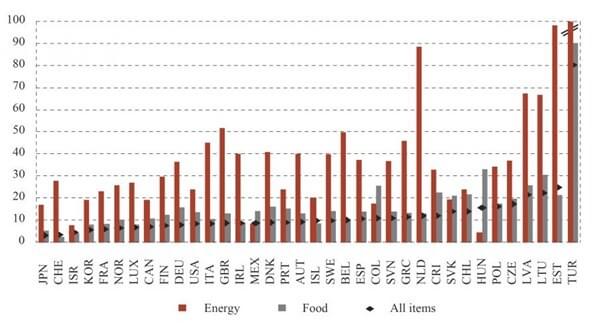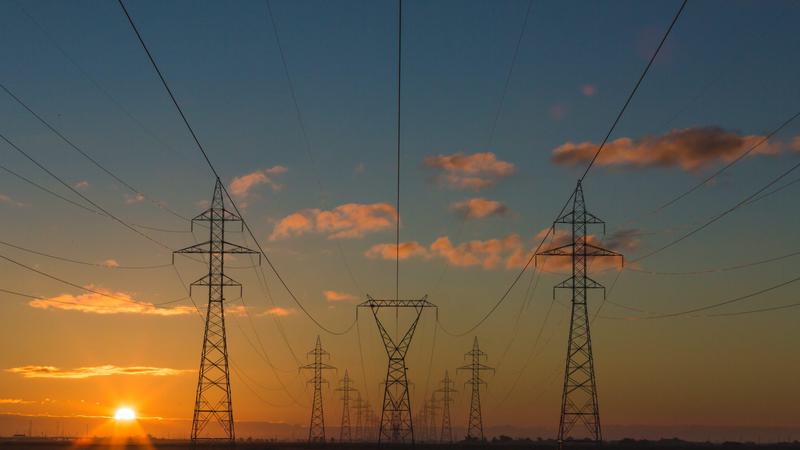A cost-of-living squeeze? Distributional implications of rising inflation

Share
Analyst, Chiara Soriolo, co-authored a paper for the Public Sector Economics Journal, quantifying the impact of rising prices on households’ welfare by drawing on national micro-based household budget survey data.
Abstract
In most OECD countries inflation sharply increased since the end of 2021, mostly driven by energy and food prices. Certain categories of households are particularly vulnerable, as they spend large portions of their consumption on energy and food. Drawing on national micro-based household budget survey data, this paper quantifies the impact of rising prices on households’ welfare. Declines in household purchasing power between August 2021 and August 2022 are estimated to range from 3% in Japan to 18% in Czechia. This decline is driven by energy prices in most countries, especially Denmark, Italy, and the United Kingdom. In general, inflation weighs relatively more on lower income households. The effects are stronger for rural households, due to energy price inflation. These findings call for a careful targeting of income and price support measures, notwithstanding their administrative and logistical complexity, taking into account their effects on economic activity, inflation, and environmental goals.
Introduction
Inflation in the OECD has been on the rise since the start of 2021, intensifying sharply following Russia’s war of aggression against Ukraine. Soaring energy and, to a lesser extent, food prices are a global phenomenon, yet the inflationary picture differs across countries (figure 1).
Figure 1: Consumer price inflation across OECD countries, change between August 2021 and August 2022 (%)

This paper looks at the distributional impact of rising inflation [1] over the past year, with a focus on energy and, to a lesser extent, food price inflation, for ten OECD countries selected on the basis of adequate and timely data availability, i.e., the Czech Republic, Denmark, Germany, France, Italy, Japan, Mexico, Spain, the United Kingdom and the United States. The exercise draws on national micro-based household budget surveys (HBS) providing information on the structure of household spending across the distribution of households based on income, age, and area of residence, depending on data availability. This paper associates expenditure shares from national HBS with price changes from national CPIs.
This work informs the policy debate by identifying households more exposed and vulnerable to the recent rise in inflation and in particular to changes in energy prices, which in the future might also fluctuate as we move along the path to a low-carbon economy (IEA, 2021)1. The main findings can be summarised as follows:
- Rising prices, especially for energy, have been squeezing households’ purchasing power, but with large differences across countries, partly reflecting differences in the rate of inflation, its breadth across consumer items and the spending structure of the average household.
- Low-income, rural and senior households are more exposed to rising energy prices than the average household, but the variation in purchasing power losses across these three vulnerable groups is highly heterogeneous across countries.
- The difference in estimated energy prices effects between rural and urban areas are even larger than between lower and higher income households in most countries, and especially in Czechia, Spain, and France.
- Non-energy non-food-price inflation tends to be progressive, thus somewhat mitigating, but not offsetting the effect of rising energy and food prices. This reflects the fact that “other” rising consumer prices correspond to items representing a higher share of spending for more affluent households, i.e., nonenergy transport, recreation, restaurants and hotels.
- Improving the timeliness and granularity of the data would help in the designing of well-targeted policy support: for instance, to identify households most exposed to shifts in energy prices, e.g. those with limited financial resources and possibilities to substitute in the short-run. The digital transformation is the opportunity to build agile targeting instruments based on data collection and management.
This article was originally published by the Public Sector Economics Journal here. The views expressed in this paper are the sole responsibility of the author and cannot be attributed to Compass Lexecon or any other parties.
Orsetta Causa, Emilia Soldani, Nhung Luu, Chiara Soriolo, A cost-of-living squeeze? Distributional implications of rising inflation, Public Sector Economics Journal, 2023; https://www.pse-journal.hr/en/...
- IEA, 2021. World Energy Outlook 2021. Paris: International Energy Agency ↩︎


